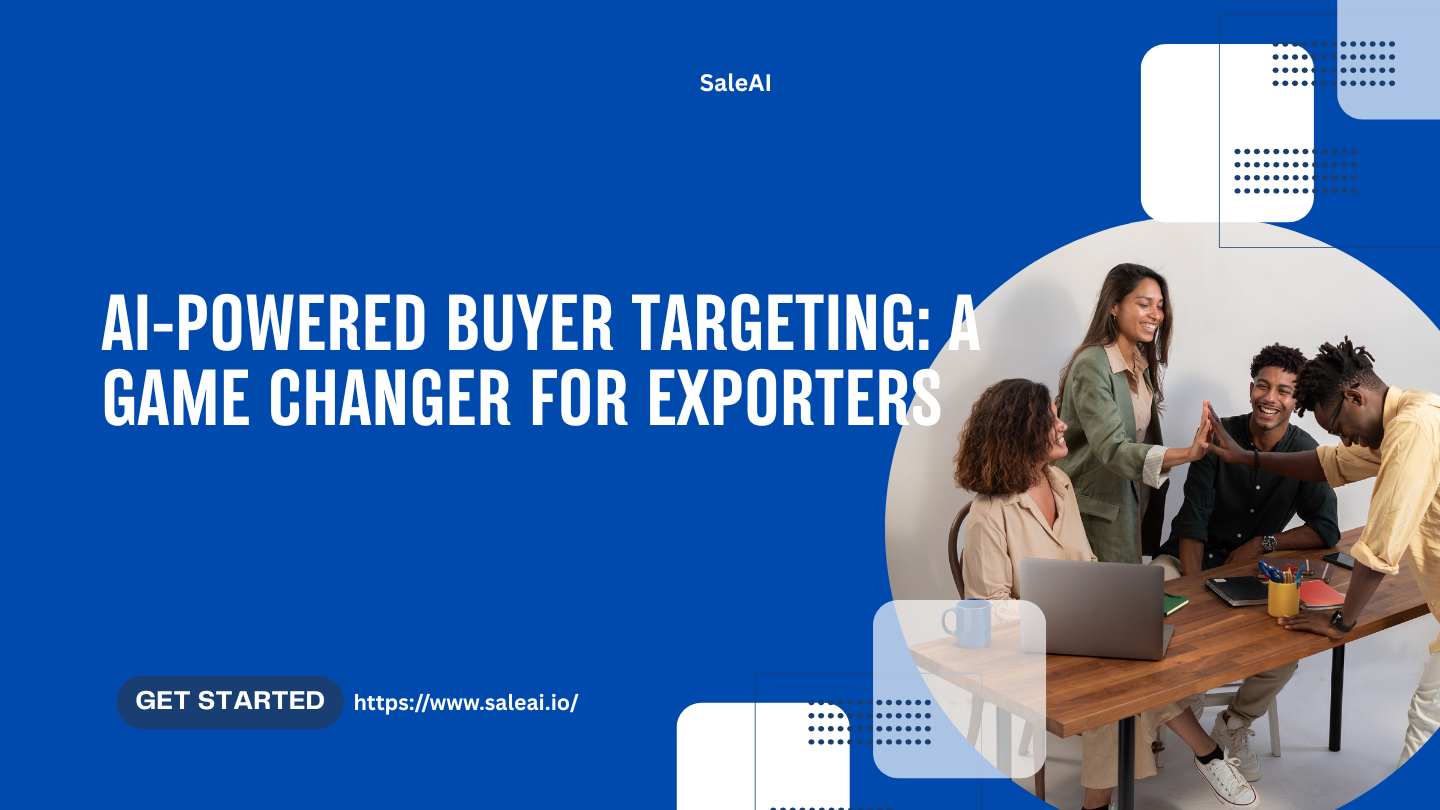Parameter change in export buyers positioning
Buyer positioning has always been the cornerstone of the success of export trade. But the way we deal with buyer positioning is undergoing a revolution. Traditionally reliance on exhibitions, outdated catalogs and unpopular promotions is being replaced by the precision positioning driven by artificial intelligence, which has completely changed the way exporters find, attract and convert potential buyers.
This is not only a technological upgrade, but also a strategic transformation. Artificial intelligence can not only help you find buyers, but also allow you to predict their needs, evaluate their behavior, and interact with them with unparalleled accuracy.
So, how should exporters truly control this power? Let’s take a deeper understanding of the new era of AI-driven buyer positioning.
Why do traditional buyer positioning strategies not work well?
Before exploring artificial intelligence, we must understand why traditional methods are becoming increasingly ineffective:
- Length of coverage:Trade exhibitions and databases are limited to specific regions or industries only.
- Static information:Buyer details in traditional directories usually get out of date very quickly.
- Broadly-speaking positioning:A one-size-fits-all approach cannot resonate with different buyers.
- Inefficiency:Manual research and promotion consumes valuable time and resources.
In today's fast-paced global trade environment, these methods make it difficult for exporters to catch up. Artificial intelligence has changed the rules of the game and has shifted the buyer's positioning from passive to active.
Artificial intelligence has advantages in buying positioningAdvantages of buyer positioning
Artificial intelligence has brought a range of features that have completely changed the way exporters identify and attract buyers. Here are its revolutionary features:
a. Large-scale global data aggregation
Artificial intelligence processes large sets of data from multiple sources—customs data, social media activities, trade records—and combines this information into actionable insights.
For example: SaleAI integrates more than 30 billion global trade records to identify active buyers in real time.
b. Buyer behavior forecast
With machine learning algorithms, artificial intelligence can analyze buyer activity patterns to predict future demand or identify buyers who may change suppliers.
Key Insights:Forecast analysis can help exporters predict seasonal peak demand or changes in buyer preferences.
c. Super personalized
Artificial intelligence customizes promotion work based on the attributes, preferences and behaviors of individual buyers, conveying customized information that resonates with each other.
Case Study: A textile exporter using AI-driven personalization increased buyer engagement rates by 40%.
d. Real-Time Adaptability
AI doesn’t just provide insights; it evolves with the data. As markets change, AI algorithms adapt, ensuring your targeting strategies remains relevant.
Impact: Exporters can pivot quickly to capitalize on emerging opportunities or mitigate risks.
From Data to Decisions: The Buyer Targeting Workflow with AI
Let’s break down the step-by-step process of using AI for buyer targeting:
Step 1: Data Collection and Integration
AI tools like SaleAI aggregate data from diverse sources, including:
- Customs records
- Social media platforms (e.g., LinkedIn, Facebook)
- Trade publications and industry reports
Example Application: SaleAI’s TradeLink Insights pulls real-time customs data to identify active importers by region and industry.
Step 2: Buyer Profiling and Segmentation
AI categories buyers into detailed segments based on:
- Industry and product preferences
- Purchasing frequency and volume
- Geographical location and market trends
Why This Matters: Segmentation enables exporters to prioritize high-value buyers and tailor their strategies accordingly.
Step 3: Predictive Targeting
AI algorithms analyze historical data to predict:
- Buyers likely to increase order volumes
- Emerging markets with growing demand
- Companies at risk of leaving current suppliers
Pro Tip: Use this data to target buyers during key decision-making windows, such as budget cycles or seasonal demand peaks.
Step 4: Multi-Channel Engagement
AI automates outreach through channels like:
- Email campaigns
- WhatsApp and SMS messaging
- Social media ads and direct messages
Efficiency Boost: Automation ensures consistent, timely communication with buyers globally.
Step 5: Continuous Optimization
AI tracks campaign performance, monitors buyer interactions, and refines targeting strategies based on real-time feedback.
Dynamic Adaptation: Exporters can adjust their messaging, pricing, or outreach strategies instantly to improve results.
Overcoming Common Challenges in AI-Driven Buyer Targeting
-
Data Overload:
- Challenge: Too much data can overwhelm decision-making.
- Solution: SaleAI filters and prioritizes data, presenting only the most relevant insights.
-
Resistance to Change:
- Challenge: Teams may be hesitant to adopt AI tools.
- Solution: User-friendly interfaces and training sessions make the transition seamless.
-
Initial Investment:
- Challenge: Implementing AI tools require upfront costs.
- Solution: The ROI from improved buyer targeting and increased conversions offsets these expenses quickly.
Real-World Impact: AI Success Stories
Case Study 1: Machinery Exporter
- Problem: The participation rate of traditional email marketing activities is low.
- Solution: SaleAI segments buyers based on the industry and customizes information accordingly.
- Result:Response rate increased by 35%, sales increased by 20%.
Case Study 2: Food Exporters
- Problem:Regional buyers are inaccurate in positioning.
- Solution: AI identifies high demand areas and optimizes pricing strategies.
- Result:Extended to two new markets, generating an additional $1 million in revenue.
The future of buyer positioning: what is the next step?
Artificial intelligence is just the beginning. Emerging technologies such as natural language processing (NLP) and generative artificial intelligence will:
- Enhance buyer communication through real-time language translation.
- Generate dynamic and personalized marketing content.
- Provide deeper insights through sentiment analysis of buyer feedback.
Exporters who accept these innovations will take the lead in the global market.
Conclusion: Use artificial intelligence to change your target positioning
Artificial intelligence-driven buyer positioningis not just a tool, but also a strategic advantage. By leveraging platforms such as SaleAI, exporters can:
- Accurately identify and attract high-value buyers.
- Optimize outreach strategies to achieve maximum ROI.
- Stay agile in a rapidly changing global trade environment.





